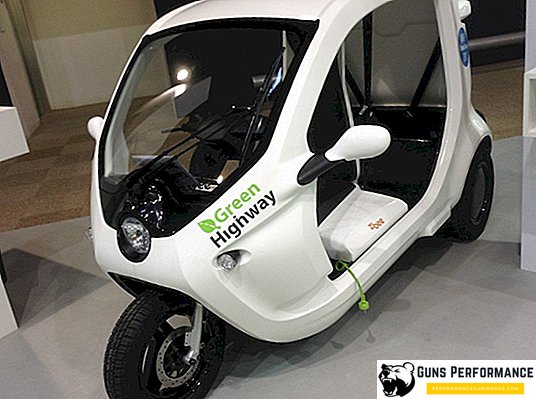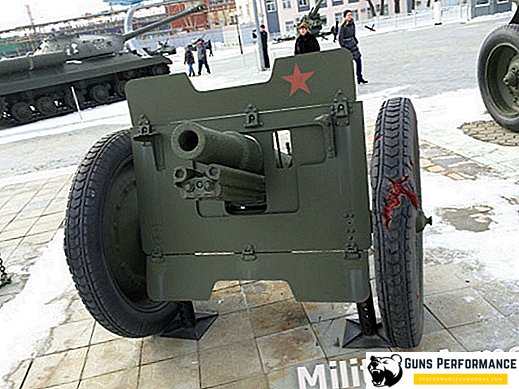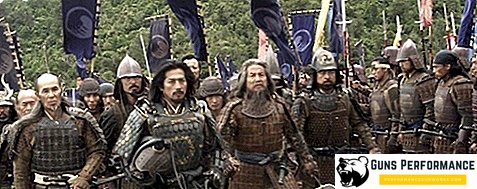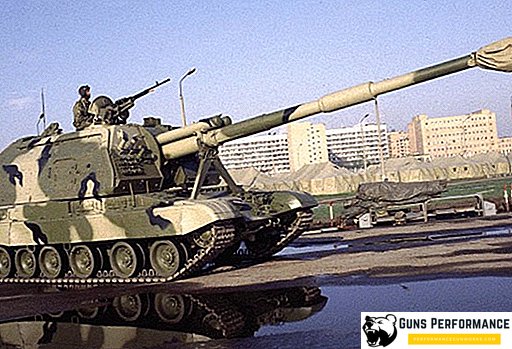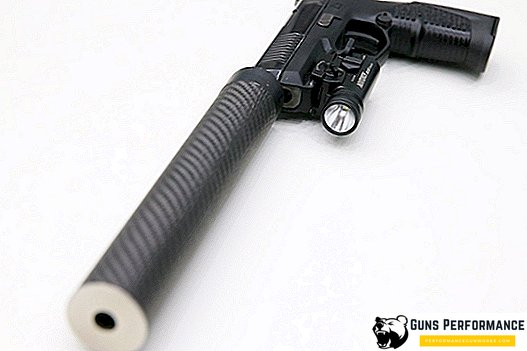The 7.62-mm PKK is a Soviet machine gun that Mikhail Timofeevich Kalashnikov designed as a single machine gun for the USSR Armed Forces. The Kalashnikov light machine gun was adopted in 1961. The PKK was used in many armed conflicts and wars in the second half of the 20th and early 21st centuries.
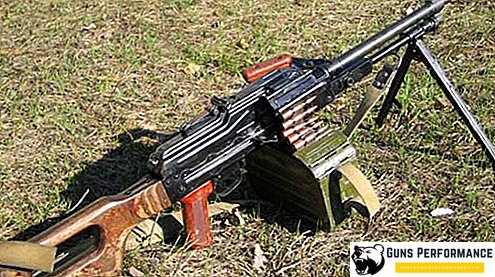
The basis for the development of the PKK (7.62 mm caliber) was the AKM machine gun (an improved version of the Kalashnikov AK 47). This helped to successfully solve one of the most important tasks - the standardization of small arms. The Kalashnikov light machine gun received a device made on the same principle with AKM, with many interchangeable units and standardized ammunition. As a result, the Soviet army was the first in the world to receive an infantry machine gun and a machine gun of similar design. This has given huge advantages:
- in production;
- in training;
- in maintenance;
- in the provision of spare parts.

The history of the creation of the PKK
By the beginning of the 1960s, the Soviet Army did not have modern models of single machine guns. The machine gun of Goryunov, which was in service at that time, was reliable and powerful, but its weight was large, and this small-mobile weapon no longer met the requirements of either the Airborne Forces or the ground forces. To create a new weapon, a competition was organized, in which many well-known designers took part. The competition was won by a machine gun created by a team led by M. Kalashnikov. The machine gun had a caliber of 7.62 mm. The new weapon was both reliable and lightweight, and its characteristics by all indicators were significantly superior to the American equivalent of the M60.
In 1961, the Kalashnikov light machine gun was adopted. The producer of the PKK became the Vyatsko-Polyansky plant "Molot".

The merits of the PKK
Due to the fact that the AKM machine gun became the basis for the machine gun, it was possible to achieve:
- simplify the production of the PKK, as well as its easier development in the army
- reliability of work and excellent performance characteristics
- ease of care, repair and disassembly.

Differences between PKK and AKM
- to increase to 745 m / s initial velocity of the bullet, the barrel was lengthened;
- the receiver liner has been reinforced;
- the weight of the barrel is increased to ensure the intense fire in comparison with the AKM;
- to ensure stability when shooting a machine gun supplied with light folding bipod;
- to increase combat effectiveness, the capacity of the machine gun magazine has been increased to 40 rounds (sector) and 75 rounds (disk);
- butt performed in the form of Degtyarev machine gun butt for ease of shooting;
- sight provided moving entirely.

The combat use of the machine gun PKM
The Kalashnikov machine gun, as well as its modifications, as well as the AKM machine gun, have been actively used for the past 30 years in almost all military conflicts. The modernized Kalashnikov machine gun has proved to be an effective, reliable and powerful weapon, quite often it is used by the troops of a number of Western countries. A certain number of PKM is in service with the Israeli army.
PCM is served by the calculation of two people. Attached to the machine gun device for stuffing tapes, a spare barrel, 600 rounds (2 tapes of 100 and 2 of 200 rounds of ammunition). The total weight of the entire set of PCM is approximately 30 kilograms. The calculation can also get a night sight and machine Samozhenkova (weighing 9 kg). During the Arab-Israeli wars, the Egyptian infantrymen often installed tank sights on the PC, which made it possible to conduct aimed fire at a distance of more than 1,800 meters.

Characteristics of the Kalashnikov machine gun modernized (PKM)
- Caliber - 7.62 mm
- Rate of fire, 600-800 shots / min
- Sighting range - up to 1500 m
- Initial bullet speed - 825 m / s
- The height of the line of fire - 300 mm on the bipod
- Tape capacity - 100 and 200 cartridges
- Cartridge - 7.62 × 54R
- Guaranteed operating time using a single spare parts and two barrels - at least 25,000 shots
- Dimensions - 1160 × 215 × 372 mm
- Weight - 7.5 kg
- Combat rate of fire - 250 shots / min
- The operating temperature range is ± 50 ° C.
The main options for the Kalashnikov machine gun
- PC - Kalashnikov machine gun on the bipod.
- PKS - Kalashnikov machine gun.
- PKB - Kalashnikov machine gun armored.
- PKM - Kalashnikov machine gun modernized on a bipod.
- PKMS - Kalashnikov machine gun modernized easel.
- PKMB - Kalashnikov machine gun modernized armored personnel carrier.
- PKT - Kalashnikov tank machine gun.
- PKTM - Kalashnikov machine gun tank modernized.

Kalashnikov RPK 74 machine gun
The Kalashnikov RPK 74 machine gun (5.45 × 39 mm caliber) is a light machine gun designed to replace the PKK (7.62 × 39 mm caliber) with a weapon that uses a low-pulse, lightweight cartridge. It was put into service simultaneously with the AK74 assault rifle in 1974. In 1993, after the AK-74M machine gun was created, observing the principle of unification, the RPK-74 was modified to the standard RPK-74M. On the basis of the RPK-74M, a version of the RPK-201 was developed for export, using a 5.56 × 45 mm NATO cartridge.
RPK Characteristics
- Effective shooting range:
- on aerial targets - 500 m;
- for group ground targets - 1000 m;
- for single ground targets - 600 m.
- Direct shot range:
- on a running figure - 640 m;
- chest figure - 460 m.

Despite the large degree of unification with the AK-74, the design of the RPK-74 has significant differences due to the specificity of using a machine gun as a fire support weapon. Undergone changes: the trunk, the liner liner, fixed non-removable bipods, a slotted flame arrester installed. As a result, the disassembly and assembly of the RPK-74 was somewhat modified.
Kalashnikov machine gun tank PKT
PKT - Kalashnikov tank machine gun is used to arm armored vehicles, tanks and other objects of military equipment. It acts as an automatic weapon for defeating fire weapons and enemy manpower.
As a result of the unification of weapons in the Soviet Army in 1962, the PKT was adopted as a tank machine gun. Kalashnikov because of the specifics of the combat use of PKT introduced a number of changes in the design of the machine gun. In particular, it is:
- 1200 grams of trunk weight increased to provide intense fire;
- PCT barrel length increased to 722 mm;
- slides are added to attach to the appropriate tank installations;
- a gas regulator has been added to prevent bleeding of powder gases into the fighting compartment;
- the absence of sights, as the aiming is carried out using an optical sight;
- butt eliminated;
- To ensure the remote control of fire, the electric release is engaged, which is mounted on the back plate of the receiver.
Specifications:
- Chuck - 7.62x54R.
- Rate of fire 600 - 800 shots / min.
- Barrel length - 722 mm.
- The length of the machine gun - 1098 mm.
- Machine gun weight without ammunition - 10.5 kg.
- The weight of the trunk - 3.23 kg.

Ammunition for the PKK
The shooting of the PKK is carried out by 7.62 × 39 cartridges of the 1943 model with the following types of bullets:
- Ordinary with steel core. Used to defeat manpower.
- Tracing. It is used for correction and target designation at a distance of up to 800 m, including for the defeat of manpower.
- Armor-piercing incendiary. It is used to ignite flammable liquids, including for the defeat of manpower, located openly or behind obstacles pierced by bullets.



